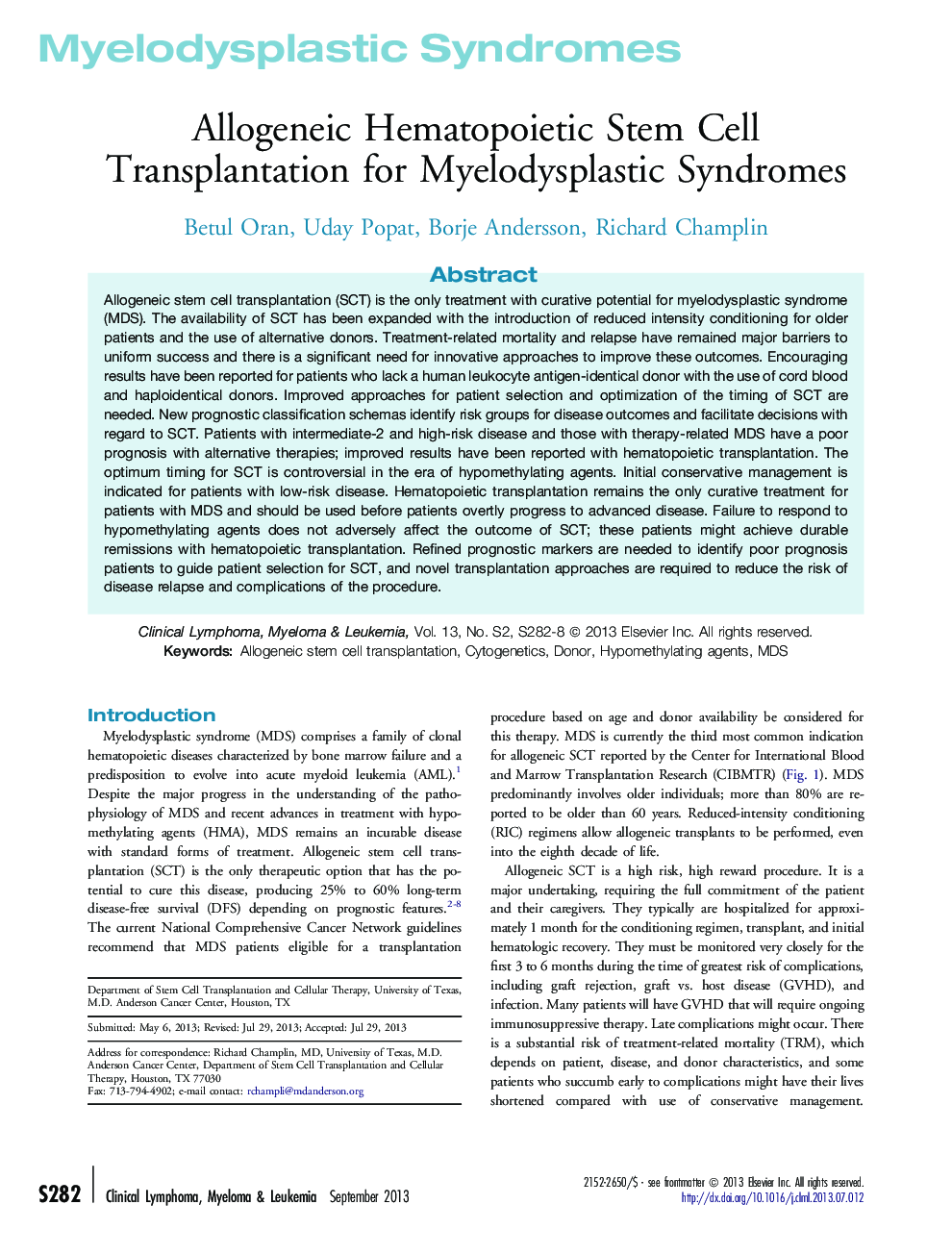| Article ID | Journal | Published Year | Pages | File Type |
|---|---|---|---|---|
| 2755028 | Clinical Lymphoma Myeloma and Leukemia | 2013 | 7 Pages |
Allogeneic stem cell transplantation (SCT) is the only treatment with curative potential for myelodysplastic syndrome (MDS). The availability of SCT has been expanded with the introduction of reduced intensity conditioning for older patients and the use of alternative donors. Treatment-related mortality and relapse have remained major barriers to uniform success and there is a significant need for innovative approaches to improve these outcomes. Encouraging results have been reported for patients who lack a human leukocyte antigen-identical donor with the use of cord blood and haploidentical donors. Improved approaches for patient selection and optimization of the timing of SCT are needed. New prognostic classification schemas identify risk groups for disease outcomes and facilitate decisions with regard to SCT. Patients with intermediate-2 and high-risk disease and those with therapy-related MDS have a poor prognosis with alternative therapies; improved results have been reported with hematopoietic transplantation. The optimum timing for SCT is controversial in the era of hypomethylating agents. Initial conservative management is indicated for patients with low-risk disease. Hematopoietic transplantation remains the only curative treatment for patients with MDS and should be used before patients overtly progress to advanced disease. Failure to respond to hypomethylating agents does not adversely affect the outcome of SCT; these patients might achieve durable remissions with hematopoietic transplantation. Refined prognostic markers are needed to identify poor prognosis patients to guide patient selection for SCT, and novel transplantation approaches are required to reduce the risk of disease relapse and complications of the procedure.
